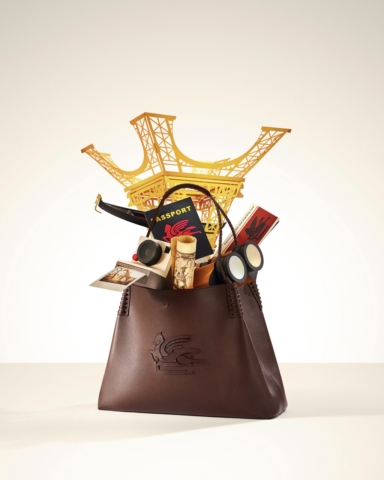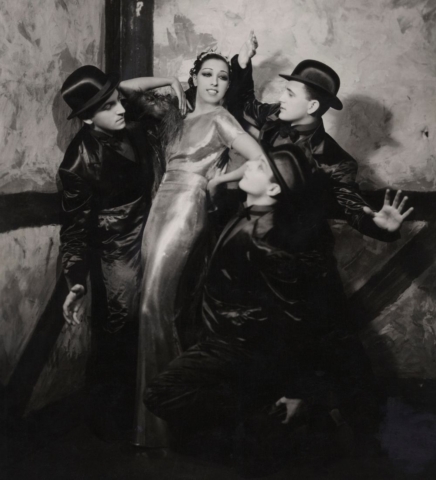NEWS: A Celebration Of Karl
By Jo Phillips
When he was appointed artistic director of Chanel in 1983, the prolific designer revived the house. He introduced streetwear in haute couture before everyone else and slipped magic and a sense of humor into fashion, albeit in a serious manner. He wanted to save the craftsmanship and Métiers d’Art from a slow disappearance. He was passionate about the eighteenth century and reinvented the Chanel style, creating a joyful mix between the eighteenth century and a rock-romantic spirit. He liked “to make a better future with the broader elements of the past”. And using the past tense to talk about him seems horribly anachronistic.
Karl Lagerfeld did not come out after the last Chanel fashion show last January, leaving Virginie Viard, director of the Studio Chanel, who worked with him for more than 30 years and will continue his work. And everyone held their breath at the announcement of his absence. Since he took over the reins of Chanel in 1983, it had never happened before.
 Self-Portrait Karl Lagerfeld, 2018.
Self-Portrait Karl Lagerfeld, 2018.
In 2018, the house of the rue Cambon broke the law of silence that it had imposed and unveiled its turnover: 9.62 billion dollars made in 2017. Would Chanel have reached this level if, in 1983, Karl Lagerfeld was not appointed to the artistic direction of the house? Gabrielle Chanel had departed ten years ago with an aging brand. No one wanted to wear her suits that came under the knee, part of the anatomy she abhorred. But then Karl arrived, with his catogan, having already behind him a career and before him a whole story to rewrite.
Karl Lagerfeld made his fashion debut at the same time as Yves Saint Laurent. They also shared the first prize in the International Wool Secretariat’s annual contest, one for a coat and the other for a dress. But unlike Yves Saint Laurent, quickly dubbed by Christian Dior, he did not immediately know the brilliance of light. He drew relentless collections for brands all over the world, big or small: Balmain, Patou, Krizia, Charles Jourdan, and more. He spent 20 years at Chloé where he created wonders of modernity, remained 53 years at Fendi, and created his own brand and even a masstige (mass prestige) capsule collection for H & M in 2004. But the house that he was impersonating best is Chanel.
Thanks to his creative genius, generosity and exceptional intuition, Karl Lagerfeld was ahead of his time, which widely contributed to the House of Chanel’s success throughout the world,” said Chanel CEO Alain Wertheimer in a statement on the morning of 19 February. “Today, not only have I lost a friend, but we have all lost an extraordinary creative mind to whom I gave carte blanche in the early 1980s to reinvent the brand”.
To give him carte blanche was the best thing that could be done. But in the early 80s, no one could have imagined what would become of Chanel, not even those who worked with Karl Lagerfeld upon his arrival in the house on the rue Cambon. “I met Karl when I was 16 years old,” says Victoire de Castellane, artistic director of Dior jewelry. “At the end of 1983, a friend offered me to do an internship at Chanel and that’s when I met Karl. He asked me to stay and take care of the costume jewelry. It was very simple. I worked with him for 14 years. We worked seriously, but without taking ourselves seriously. Karl loved to play with Chanel’s identities: we played with the logos, the sizes of the accessories, the volumes, everything was done in a funny way but the result was very desirable. And suddenly the success of Chanel came very quickly: I witnessed the explosion. Karl was a great art director: he had ideas, visions, he was very good at staging things, he conceptualized, and I learned that from him: to conceptualize. He liked to play with some elements of Chanel’s past to reinvent them in the present, or the future. It was light, funny. At the time, there were many designers and stylists who pretentiously tortured their minds. Karl was never pretentious or tortured, and it was very nice to work with him. He was doing a lot of things at the same time: the Chloé, Fendi collections. Of course he had the ambition to succeed but I think that the success of Chanel exceeded everyone’s expectations, and his too.”

Karl Lagerfeld has certainly been the most prolific of all fashion designers. But what is less known is that he taught at the Beaux-Arts in Vienna, that he appeared in the movie L’Amour by Andy Warhol playing his own role, and that he has created theater costumes for Luca Ronconi. In the meantime he decorated many houses, mounted collections which he knew how to get rid of, and made many photos and a few short films. All of this was done without forgetting the eight Chanel collections he was to create a year.
Lagerfeld has had a thousand lives: night lives, days, festive lives, creative studio life, traveler’s life, photographer’s life, curious life, collector’s life, inventor’s life, or rather, re-inventor of self, as did Gabrielle Chanel before him. Difficult to draw the skein of truth in his biography. Did he grow up in a castle, as he liked to tell and draw? Or maybe, as he said in an interview with Le Monde in April 1980, it was “in the far north of Germany, almost on the Danish border, on a farm where hundreds of cows were raised in perfect conditions. My father was doing a job with little connection to mine, since he had concentrated milk factories”. But after all, what does it matter? In 1980, he had not yet taken over the reins of the house with the double C logo and his character was not yet as defined as today, but it was already laid, including catogan.
Karl Lagerfeld could not stand boring people. The first time I met him for an interview, my first, in 2001, after a haute couture show, he had preferred to talk about art than fashion: about Alexej von Jawlensky, to be more precise. He admired this painter who could depict the human soul with a few lines and had dedicated a collection to him. I do not know what would have resulted from their meeting? Could the painter have seen what was hidden beyond those black glasses, those shirts with high, starched necks, those mitts that hid his short fingers? Would he have discerned the man behind the characters of composition, behind this theatrical representation in black and white?
He was devoted to the eighteenth century, a passion that never left him in spite of his interests for so many other topics. He loved the vigor of this era. In his last fashion spring summer haute couture show, he paid tribute to mercer merchants who sold luxury goods under the Old Regime. And to Marie-Antoinette’s mind, of course. “I know Versailles by heart,” he said to me after the 2013 Croisière show. “I can do the guide here. I did it in evenings. In each room of the castle, I can tell you what happened. And in each grove, I can tell you what they did.” And that made him laugh. “I am a voyeur,” he said. From this fascination, he was a voyeur to the point of perceiving the unbearable lightness of beings through the centuries.
How was it to live with this man on a daily basis? I had asked Virginie Viard, the dream interpreter of Karl Lagerfeld, who was chosen by the house to continue his work and that of Gabrielle Chanel. Why did she chose to spend part of her life with him above all others? Her answer was: “Because it’s him.” And while she was talking, Karl Lagerfeld was bombarding her with photos of his cat Choupette by SMS.

“He’s so funny! We do not bore for two seconds with him,” she said again. “He is not pretentious. That’s what I love. He is very conscientious, hardworking, but he does not take himself too seriously. These are just clothes, but with him they are magical. He loves fashion, he does not get tired of it. Sometimes I say to myself: he’s not fed up?
He never got tired of it. Even after the Métiers d’Art collection, shown in New York in December 2018, a fireworks display of know-how, he had not had enough yet. “Well, that doesn’t make the next collection,” he said, as he says after all his collections. And he had the elegance to do it all again.
One day he told me, on the occasion of a blue collection: “I love planes. There is no place that relaxes me so much. There is no telephone and as a general rule, there are very few people traveling with me and they are looking a screen. In the air, I have a royal peace. ”





